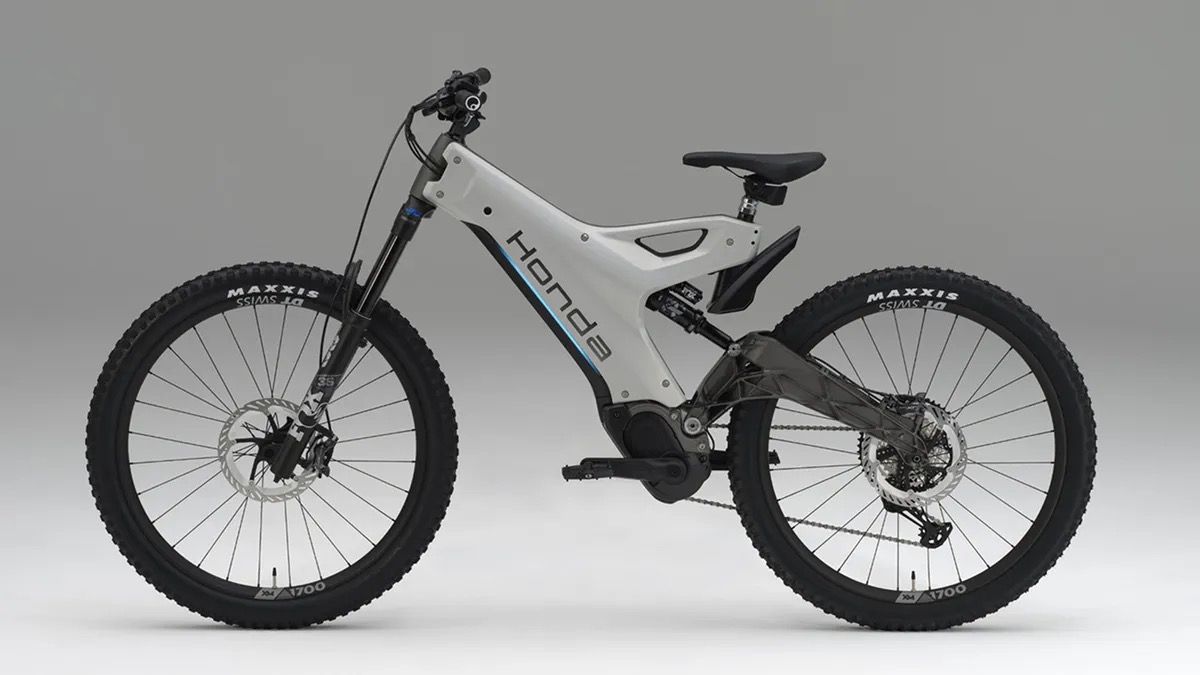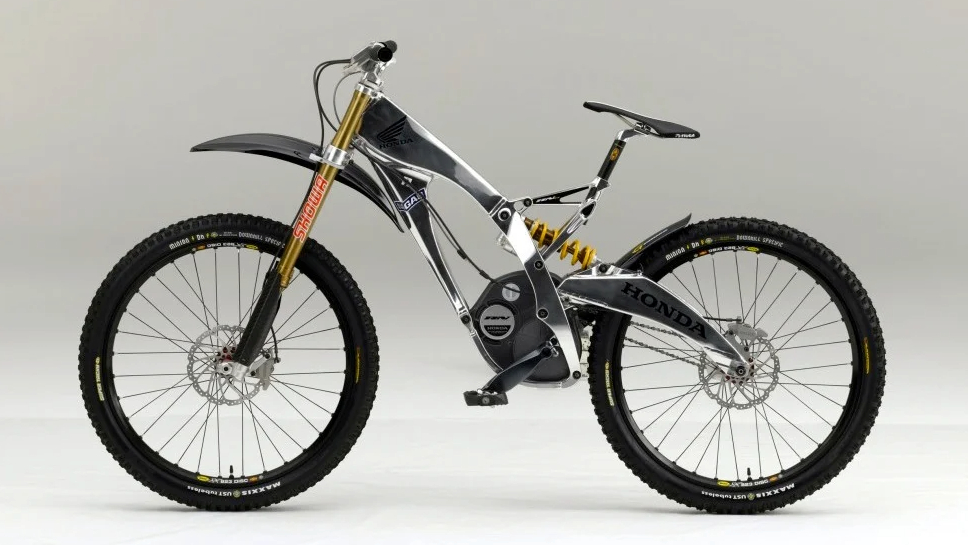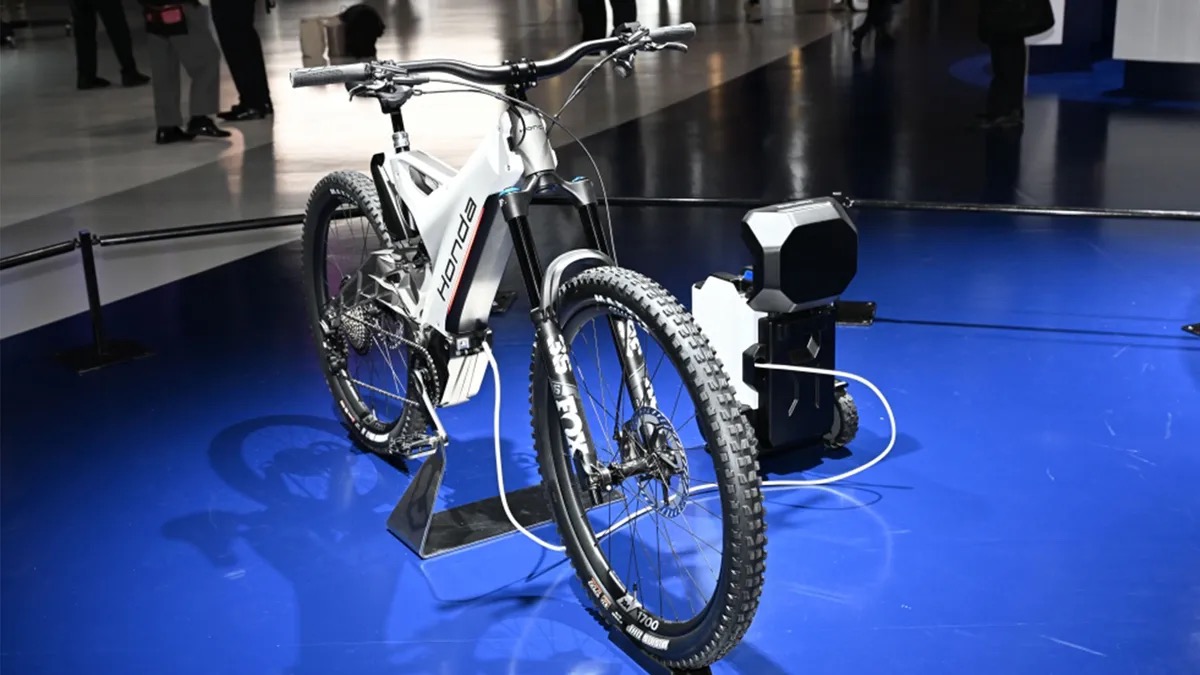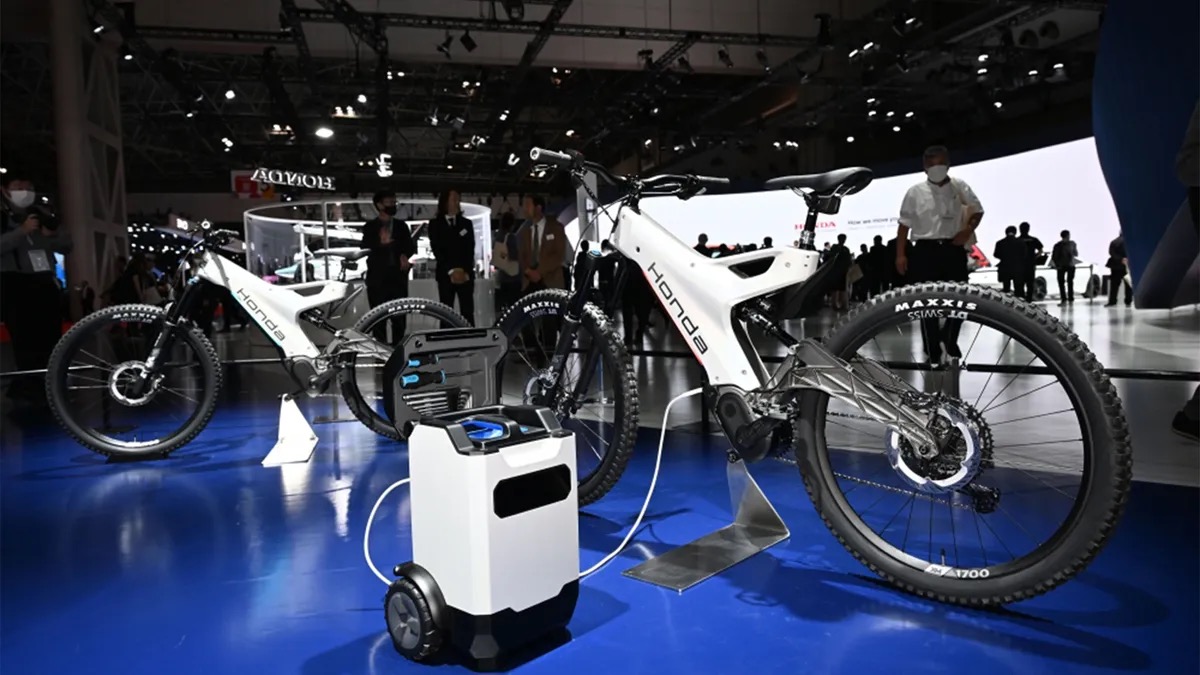
Back in 2004, Honda burst onto the downhill scene with their futuristic and secretive RN-01 G-Cross bike, piloted by none other than World Champion Greg Minaar. It was exactly what you’d hope for from a legendary race motorbike brand too. A polished monocoque alloy and carbon fiber frame, prototype forks and shock from moto royalty Showa Corporation and a secret ‘gearbox’. The bike was successful too, winning the world cup overall in 2005 under Minaar as well as several world cups and national titles.

The bike was retired in 2007 having never been available commercially. The ‘secret gearbox’ also turned out to be just a half-shaft driven derailleur set up encased in carbon fiber. However, that Honda is still an icon of industrial design and marketing today and people have always hoped the Japanese company would return to MTB in similar style.

More 'ick' than iconic
The concept e-MTB Honda unveiled at last week’s Japan Mobility Show is more ick than icon at first glance though. The chunky cantilevered seat mast mainframe and arcing single swingarm look a lot like the mid 1990s, iconic and all-American Mountain Cycle San Andreas, but with its own faults. The main pivot behind and above the crank axle is likely to pedal really badly and potentially brake jack like a bronco. The seat mast is so shallow that there’s little room for adjustment of the post without it bottoming onto either the shock, tire or swingarm. The design means you’ll only be able to use a side pull cable or wireless post (Honda have fitted a RockShox Reverb AXS) rather than a conventional bottom cable post too.
Despite the motor apparently being a Brose, they don’t seem to have fitted the fancy new SRAM PowerTrain Auto Shift setup. In fact, given that both bikes are supported by the cranks in a five o’clock position (where there’s no freehub or clutch ‘catch’ to stop the weight of the bike rotating them anti-clockwise) I’d doubt they even have a motor in them at all. While photos are limited judging by the shifter pod and cables going into the frame from the bars, they’ve not even fitted AXS wireless gears of any sort.
An extra cable coming from the left-hand side of the bars means either the motor controller or the rear shock has a cabled rather than wireless controller too. The standalone charger trolley with tool box top brings Moto GP vibes to the trailhead car park. It gets around the glitch that none of Honda’s current electric cars have a power take off that could recharge the bike natively. However, it’s a lot less than convenient than just bringing a spare battery.
Finally, while the Performance Elite spec Fox suspension, Shimano XT disc brakes and DT Swiss Hybrid 1700 wheels are great cost effective options they’re not exactly show stopper spec. Perhaps unsurprisingly, according to bike-eu.com Honda Motor Co Ltd Director, President and Representative, Toshihiro Mibe, didn’t even refer to the bikes at all in his 'Honda Dream Loop' speech either.

Moto manufacturing
There is something potentially interesting about the two bikes though and that’s how they’re made. The best information I’ve found comes from Honda Global which says the “frame and swingarm are built using thin wall aluminum casting technology known from high performance motorcycles”. That suggests a high pressure die cast process that gives the material the compression it needs to be structurally strong. Something I’m thankful for after near death experiences riding prototype sand cast bikes in the past. If Honda are only creating a couple of show bikes not a production bike they might be using a pressurized sand system similar to that used to create the splendidly anti-marketing titled Heavy Bike Hypocrite.
The fact they’ve stuck with aluminum alloy is also slightly disappointing as Honda have developed their own magnesium alloys to create 35 percent weight savings in some components for their electric cars. Aluminum alloy does reduce the corrosion risks which killed the Kirk Magnesium bike dream. It also increases the flash point at which the frame would become a spectacular part of the already growing issue of e-bike fires too. Die cast mass production would also solve the slow manufacturing issues of 3D additive printing as used by Atherton Bikes and others.
We’re not expecting to test the bike any time soon (especially after this feature) but we’ll keep our ears open for any developments and let you know ASAP. We’d genuinely love to see a big player like Honda get involved in the bike space alongside other motorbike players like Yamaha, GasGas, Husqvarna and others. We’re always interested to see new tech in materials and manufacturing being introduced into MTB too.







